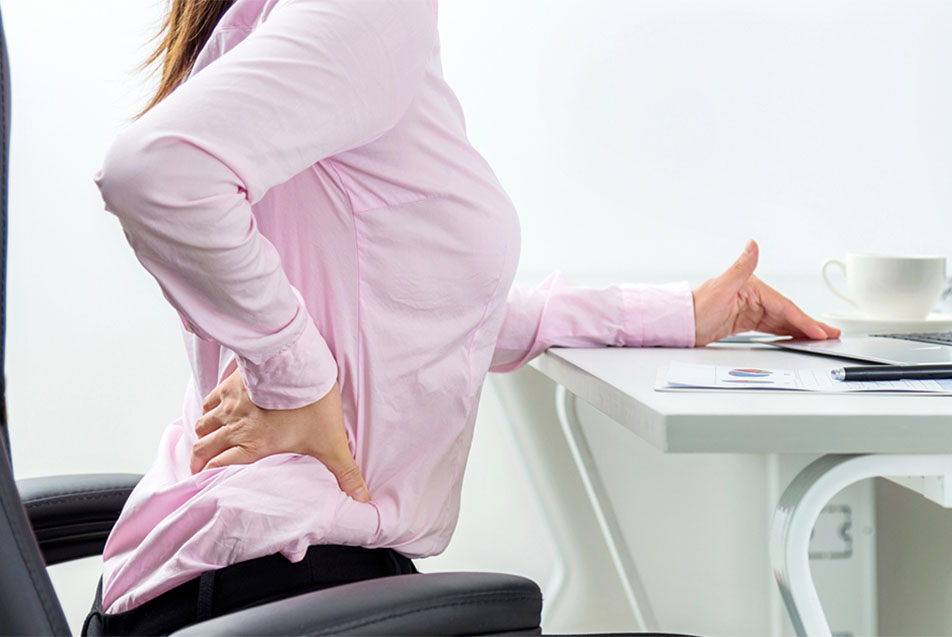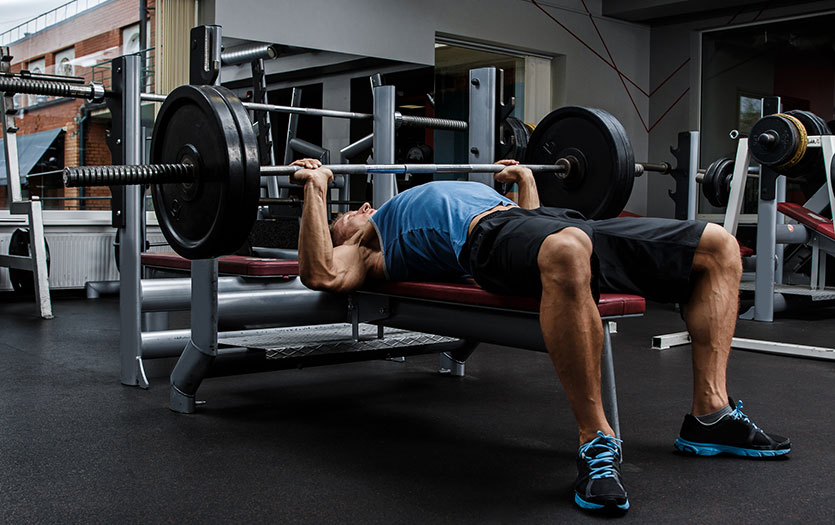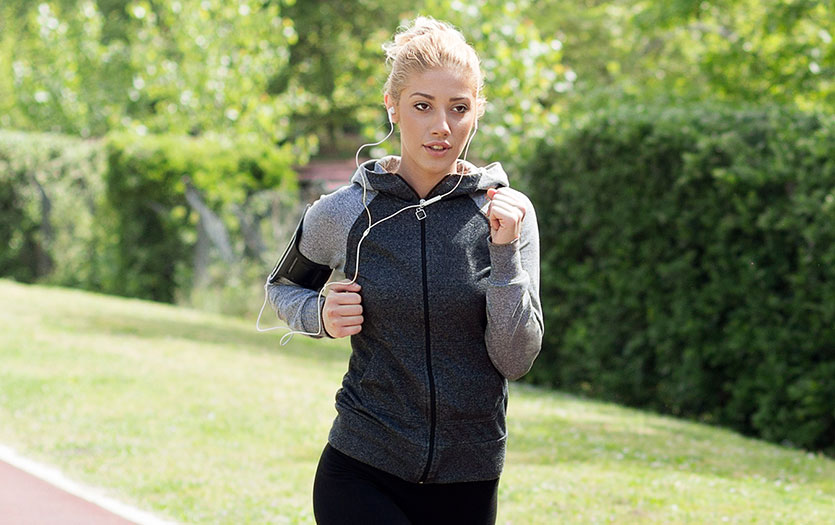
Have you ever tweaked a muscle just by reaching or bending over? What about sitting at your desk all day — has it ever caused you lower back pain? If so, you’ve probably asked yourself, “How could I get hurt? I wasn’t even doing anything!”
Congratulations, you’ve just demonstrated the importance of having strong core muscles. We hear a lot about the need for core strength, but what does it mean? And where exactly is your core? Good questions. Your core is basically your midsection. It includes the various muscle groups — abs, obliques (side), lower back and pelvic muscles — that keep your body stable and help support your spine and skull.
Almost every movement you make originates in your core. Walking, exercising, doing housework, getting dressed, using a computer, even just sitting in a chair requires core strength. In Pilates, they call this area the “powerhouse.” It not only acts as the muscular foundation for your body, it helps to protect your internal organs and central nervous system as well.
Here are 7 healthy reasons to keep your core strong:
- Reduced back pain. People with a weak core (and women with larger breasts) are more likely to experience backaches and injuries because their core muscles can’t properly support their spine. Core strengthening exercises, however, can help alleviate pain and improve mobility for even chronic pain sufferers.
- Improved posture (and breathing). When your core is strong, it’s easier to stand up straight and tall. Poor posture is often just a sign of weak core muscles. And when you do stand tall, you get the added benefit of an uncompressed airway, making it easier to breathe.
- Steadier balance. Generally, the stronger your core muscles, the better your balance. A powerful core allows you to navigate more easily through the world, even on bumpy or slippery surfaces, without falling.
- Reduced risk of injuries. When you’re moving, it’s logical to assume your extremities are doing all the work. But virtually every movement — from tying your shoe to picking up a tired toddler — starts at your core and moves outward. A strong, flexible center is what keeps these other muscles from straining and being injured.
- Better digestion. If your core muscles are too tight and inflexible, they can compress your pelvic organs and lead to poor digestion. But by stretching your core, you can help to reinvigorate the systems that optimize cleansing, metabolism and more.
- Better physical fitness. A stronger core makes you better at just about any sport or physical activity you do. If you’re a runner, it helps to keep your legs from tiring too soon. If you’re a golfer, it makes it easier to swing a club. No matter what your fitness goals, a strong core helps you get there sooner.
- Flatter abs. Although you’ll still need diet and aerobic exercise to trim any abdominal fat, you can use core exercises to strengthen and tone your abdominal muscles. And who doesn’t want to look great in a bathing suit?
Ready to work on your core? You don’t need fancy equipment or a gym membership to do it. Just grab an exercise mat, and get started.
Easy ways to get started:
- Sign up for class, such as yoga, Pilates or another core strengthening discipline.
- Join a gym where a personal trainer can develop a workout just for you and demonstrate the proper exercise techniques, helping you avoid injury.
- Participate in core-strengthening sports, such as swimming, kayaking, volleyball, soccer, cycling, X-country skiing or other activities that work your abdominal and back muscles in a coordinated manner.
- Work out at home. Four basic core exercises are shown below, and many more can be found on the Internet.
Keep in mind that core training is not the same thing as strength training, which focuses on a single muscle group. Core work engages as many muscles as possible in a coordinated fashion.

Here are 4 basic core exercises you can try at home.
Bridge. Lie on your back with your knees bent and your feet flat on the floor. Slowly raise your hips in the air as you tighten your abdominals and glutes. Hold your hips as high as you can for at least 30 seconds or more. As a variation, you can slowly raise and lower your hips continuously for 30+ seconds.
Plank. This beginning plank is similar to a push-up, but with your forearms and hands flat to the floor. Curl your toes under and lift your pelvis, pulling your belly button in toward your spine. Straighten your body while keeping your neck and spine neutral. Do not arch or round your back. Hold for 30 - 60 seconds. Your body should form a straight line from head to heels.
Crunch. Lie on your back with your knees bent and feet flat on the floor. Your hands can be placed gently behind your ears or crossed over your chest. Tighten your abs and curl your shoulders toward the pelvis, hold for a second, then lay back down. Do not jerk yourself up. Unlike a sit-up, your lower back stays on the floor. To avoid injury, don’t pull on your head or neck with your hands. Do as many crunches as you can; this will be your benchmark number of reps.
Standing bicycle crunch. Stand with your feet hip-distance apart and place your hands gently behind your ears. Keeping your back straight, your core tight and your shoulders relaxed, simultaneously lower your left elbow while lifting your right knee toward each other. Return to starting position, and repeat on the other side. Do at least 5 reps on each side.
Try to do 3 sets of each exercise, with rest in between. To keep from getting bored, you may want alternate exercises rather than doing 3 sets of the same exercise all at once. Go in any order or combination of exercises that feels right to you.
How to exercise your abs — even at work!
If you think your crazy work schedule might keep you from exercising, here’s good news. You can actually get a great core workout (and fire up your metabolism) right from your office chair. No special equipment is necessary. And don’t forget, too much sitting raises your risk for heart disease, diabetes and even some cancers. So any activity that breaks up that inertia is going to be good for your health.
Here are 3 ways to get a quick core workout at your desk. Again, aim for 3 sets each.
Leg lift. Sitting tall in your chair, tighten your abs and lift your right foot off the floor about 6 inches. The foot should remain directly below the knee, maintaining a 90-degree angle. Hold for 10 seconds, then slowly lower your leg while releasing your abs. Repeat with your left leg, alternating throughout the exercise. Aim for at least 5 reps on each side.
Plank. This is similar to the plank you learned last week, only this time, you’ll be resting your forearms or hands on a desk, stable chair, or window ledge instead of the floor. Start by placing your hands or forearms on the solid surface while extending your legs behind you and raising up on your toes. Pull your abs in toward your spine, maintaining a straight line between your head and your heels. Hold for 30 - 60 seconds.
Chair bicycle crunch. Scoot to the very edge of a stable chair. Sit up tall and contract your abdominal muscles. Place your hands gently behind your ears with your elbows pointed out to the sides of the room. Start by lifting your right knee and rotating your torso as you bend down to touch your knee with your left elbow. Repeat on the opposite side, doing 10 - 20 reps on each side. Make sure you sit tall with your elbows extended outward; don’t slump over.
Core twist. Sitting tall at the edge of your chair, hold a water bottle with both hands in front of your chest. Your arms should be bent, with your elbows pointed out to the sides. Tighten your abs and slowly twist to the right as far as you feel comfortable. Return to center and repeat on the left side. Perform 10 reps, alternating sides.
Try to work these exercises in throughout the day, giving yourself a little break from time to time. There’s no reason you couldn’t do them at home, too, in front of the TV. Unlike strength training, which requires time off for your muscles to repair themselves, core exercises can be done every single day (if you want to!). Strive for at least 3 - 5 times a week.



